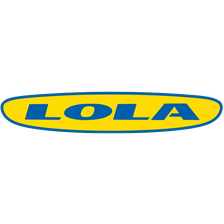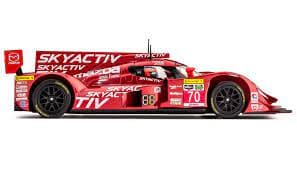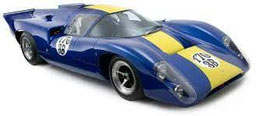LOLA Car PDF Manuals
Lola Cars History
There're 2 LOLA car owner's manuals PDF.
Lola Cars is a British manufacturer of racing cars for a wide range of championships: Formula 1, Formula 2, Formula 3000, Formula 5000, Indy-500, IndyCar, CanAm, World Sports Car Championship, FIA GT, etc.
The company's headquarters at various times were located in Bromley (Kent), Slough (Buckinghamshire) and Huntingdon (Cambridgeshire). The firm was founded in 1958.
Eric Broadley (1928-2017), who, like his competitors Colin Chapman, Frank Costin and Brian Hart, started by building a racing car based on the pre-war Austin Seven.
He borrowed the name Lola as a trademark from the song "Whatever Lola Wants" from the musical Damn Yankees (1955).
The first production model was the Lola Mk1, a small front-engined roadster with an aluminum or fiberglass body, a tubular space frame and a 4-cylinder Coventry Climax engine with a volume of 1089 cm3 and 83 hp.
After producing 35 of these cars and making sure that they perform successfully in their class in endurance racing, Eric Broadley continued design work and in 1960 he prepared an inexpensive single car for Junior Formula - Lola Mk2.
In 1961 Reg Parnell commissioned Broadley to build a mid-engined Formula One car for the Bowmaker-Yeoman team and the Lola Mk4 was born. on it in 1962.
John Surtees took 2nd place in the British and German Grand Prix, after which the car moved to the New Zealand Tasman racing series.
In the meantime, one of the first mid-engined prototypes for the Sports Car Championship, the Lola Mk6 GT, debuted at the Olympia Racing Car Show in 1963.
Equipped with an aluminum monocoque, an aerodynamic coupe body and a 4. 2-litre Ford V8 engine, it had great potential to beat Ferrari but failed to finish at Le Mans due to problems with the Colotti 4-speed manual transmission.
However, the car caught the attention of Ford, which bought the entire project from Eric Broadley and hired him to work on the Ford GT40 prototype at Ford Advanced Vehicles in Slough.
A year later, Broadley left this contract and in 1965 released his own model Lola T70, which competed with the Ford GT40 in Group 7 and Group 4 until the early 70s.
In 1967, Eric Broadley designed the "Hondola" RA300 for the Honda Racing team that won the Italian Grand Prix.
In the future, the brand appeared several times in Formula 1, collaborating with the teams BMW, Embassy Hill, Team Haas, Larrousse and Scuderia Italia.
In the 70s. Lola cars successfully competed in Group-5, Group-6 and in the North American CanAm series, in the 80s. – in the IMSA GTP championship and in Group C.
In 1998, Lola tried to create her own MasterCard-sponsored F1 team, but nothing came of it.
In 1998, Eric Broadley sold his business to Irish racing driver and entrepreneur Martin Birrand.
In the 2000s the firm returned to endurance racing with a series of prototypes for the 24 Hours of Le Mans, where they won 5 LMP2 class victories, and the American Le Mans Series.
Also in 2005-2008. she built race cars for the A1 special racing series.
In 2008, the economic crisis hit, during which the company owed more than 20 million.
In 2012, Lola Cars International went bankrupt and ceased operations, and its assets were acquired by Multimatic Engineering and Carl A. Haas Automotive.



